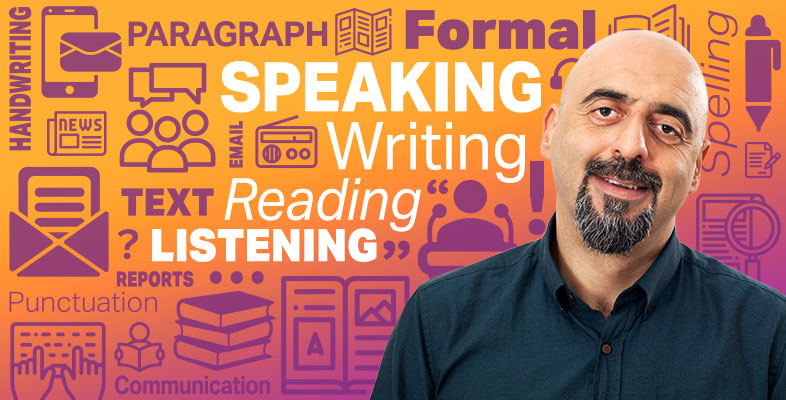2.1 Spelling
Spelling is a key aspect of writing. It helps to express our ideas clearly and makes a good impression when people read what we have written:
- If you want people to understand your ideas and what you express in writing, you need to be able to spell the words you want to use.
- For better or worse, we are judged on the quality of our spelling. People who spell well are respected.
Don’t panic if you struggle with your spelling. Spelling well is very different from spelling perfectly. Perfection is not a realistic aim. Good spelling is spelling that allows you to express yourself freely in the first place and then to correct any errors later.
It is worth remembering that although there are many words in English – about half a million – you do not need to be able to spell them all. Focus on learning to spell the words you need. If you find yourself struggling to spell the same word on several different occasions, make a note of it. Keep a list of the words you want to learn. Try targeting five a week.
Syllables
Every word has at least one syllable. Many have more than one. Some have as many as five or six.
What are they? Syllables are vowel sounds, with or without consonants. Syllables are useful for spelling as they help you to decode words by chunking sounds together. Here are a few examples:
- ‘eye’ has a single syllable made up of a vowel sound alone
- ‘my’ also has a single syllable made up of the same vowel sound, but with the consonant sound ‘mmm’ attached
- ‘ago’ has two syllables: a-go
- ‘photograph’ has three: pho-to-graph
- ‘independent’ has four: in-de-pen-dent.
Activity 8 How many syllables?
How many syllables do the words below have? Select the correct answer.
Hint: Try saying the words out loud to yourself. Say them slowly and count each syllable as you go, either on your fingers or by making a note on a piece of paper.
a.
2
b.
3
c.
4
The correct answer is a.
a.
2
b.
3
c.
4
The correct answer is a.
a.
2
b.
3
c.
4
The correct answer is b.
a.
1
b.
2
c.
3
The correct answer is b.
a.
3
b.
4
c.
5
The correct answer is a.
a.
5
b.
6
c.
7
The correct answer is b.
a.
3
b.
4
c.
5
The correct answer is a.
Once you can hear syllables, you will also be able to hear word stress. Word stress is important as it helps to identify how to pronounce and spell a word correctly by highlighting the key letters within the word. Look at these examples of shifting stress. The stressed syllable is underlined.
advertise – advertisement
electric – electricity
photograph – photographer – photographic
Activity 9 Where is the stressed syllable?
Highlight the stressed syllables in the words below.
Discussion
Working out where you place the stress in a word helps you to break it up into smaller chunks and spell out each chunk.
Here are three things you can do that may help to improve your spelling.
Top three spelling tips!
- Notice how words are spelt, wherever you are. Written language is around us all the time.
- Practise: read and write regularly.
- Review the words that matter to you and test yourself.
